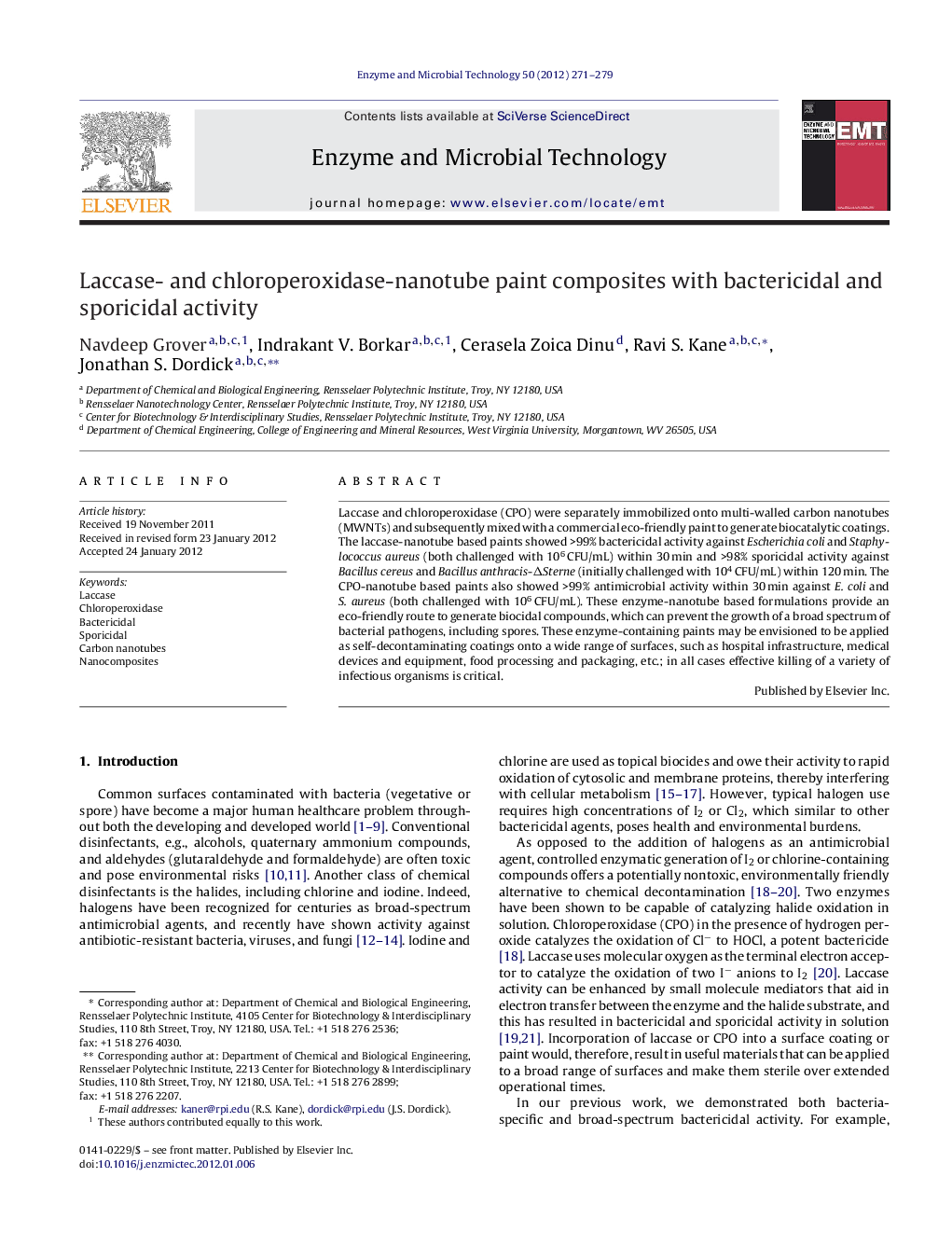| Article ID | Journal | Published Year | Pages | File Type |
|---|---|---|---|---|
| 17136 | Enzyme and Microbial Technology | 2012 | 9 Pages |
Laccase and chloroperoxidase (CPO) were separately immobilized onto multi-walled carbon nanotubes (MWNTs) and subsequently mixed with a commercial eco-friendly paint to generate biocatalytic coatings. The laccase-nanotube based paints showed >99% bactericidal activity against Escherichia coli and Staphylococcus aureus (both challenged with 106 CFU/mL) within 30 min and >98% sporicidal activity against Bacillus cereus and Bacillus anthracis-ΔSterne (initially challenged with 104 CFU/mL) within 120 min. The CPO-nanotube based paints also showed >99% antimicrobial activity within 30 min against E. coli and S. aureus (both challenged with 106 CFU/mL). These enzyme-nanotube based formulations provide an eco-friendly route to generate biocidal compounds, which can prevent the growth of a broad spectrum of bacterial pathogens, including spores. These enzyme-containing paints may be envisioned to be applied as self-decontaminating coatings onto a wide range of surfaces, such as hospital infrastructure, medical devices and equipment, food processing and packaging, etc.; in all cases effective killing of a variety of infectious organisms is critical.
► Laccase- and chloroperoxidase (CPO)-nanotube containing biocatalytic paint coatings were prepared and found to possess bactericidal and sporicidal activity. ► An ecofriendly route to generate HOCl and I2 for biocidal activity was demonstrated. ► Laccase antimicrobial activity could be activated within the paint upon addition of methyl syringate as a redox mediator. ► CPO formulations showed broad spectrum antibacterial activity but lacked sporicidal activity.
